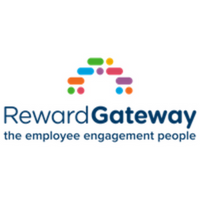Four top tips to communicate your financial wellbeing benefits

Although we are turning a corner in the Covid-19 pandemic timeline, that doesn’t mean that money issues are forgotten. Office for National Statistics figures from the beginning of the Covid-19 pandemic reveal that an estimated 2.6 million people struggling to pay bills were experiencing higher anxiety because of financial worries.
Even if a pay rise isn’t an option because of business continuity planning, employers can still offer their employees a wide range of benefits to improve financial wellbeing and help them manage their money worries, including:
- access to expert financial advice on topics such as budgeting, buying a new home and retirement
- an employee discounts scheme that includes cashback and savings on popular retailers and everyday essentials
- a parental support loan
- a salary advance
- a debt support programme.
But while employers can offer all of these benefits, it makes no difference to an employee’s everyday life if they don’t know that they’re available.
Here are a few ways you can keep your financial wellbeing benefits top of mind for every employee, no matter where they’re working:
1. Keep your communications consistent
The saying goes that every message needs to be repeated at least three times (in some cases, seven!) before people really understand it. So don’t think that just because you’ve talked about something in a meeting one time that every single person understood what was being said.
Take the opportunity to communicate your financial wellbeing benefits in new and different ways, either through an FAQ blog so people understand the ‘why’ and ‘how’ of the benefits, a company-wide announcement on your digital platform, and having managers speak to their teams, or one-on-one (if appropriate), to educate and remind everyone about the available benefits.
2. Take it on the (virtual) road
Host a benefits roadshow, either in-person if allowed, or virtually. Your HR team could set up drop in sessions, arranged for times that are convenient for all work shifts, to enable employees to ask questions about the benefits, see live demonstrations and find out how to sign up.
You may want to record these to share in future meetings or in a blog post so that more people can access the content on-demand, at a time that suits them the best. These are especially important when new starters join, but don’t forget that your veteran employees likely need a refresh, too. We recently hosted a virtual benefits Q&A specifically around our financial wellbeing benefits and had the full attention of our audience to communicate the new ways we were able to support our people.
3. Centralise employee benefits
All your benefits should have one home where employees can visit time and time again to get the information they need to engage with the benefit they want. Making this ‘home’ digital means that employees can access it anywhere, anytime – from their desktop computer or even reading about a new benefit on their mobile. You can also host important documents here, so that employees have all the information they need at their fingertips. This empowers your employees to engage with their benefits on their own time, seeing the options available to them to build confidence and understanding rather than running to your time-poor reward team each and every time.
4. Have your employees tell their stories (and be an advocate for it yourself!)
When a benefit impacts an employee, it can be a memorable moment for others to understand how they could use it too. For example, if you’ve introduced a benefit to help employees with their wellbeing, such as a wellbeing allowance that removes the financial burden for them, you could encourage employees to share what they spent their wellbeing allowance on.
Our employees use our wellbeing allowance on everything from paying for gym memberships to learning a new language, and I’m always surprised by the creative ways employees are improving their wellbeing.
Keep in mind that it can still be challenging to know what’s being used and by whom in your company, but two ways you can get around this is by making sure to regular get feedback about employees’ benefits awareness through surveying them, and by checking any analytics associated with your benefits.
If the benefits are digital, such as articles on money management that you offer to your employees for free, you should be able to tell what kind of content your employees are engaging with and how much they engage to determine whether that benefit is worth keeping or not.
Final thought
Communicating your benefits is never quite ‘done’, but with the right tactics you can put together a continual communications strategy that keeps your benefits in the spotlight and makes your employees excited about all the great things your company has to offer.
This article is provided by Reward Gateway.
In partnership with Reward Gateway
We help the world's leading companies with an employee engagement platform.







